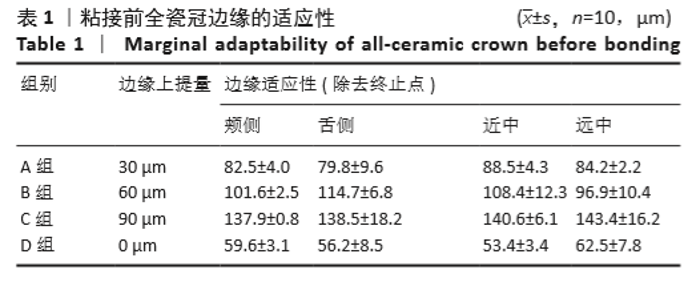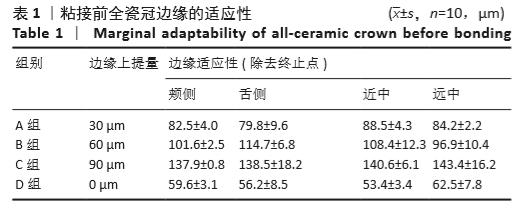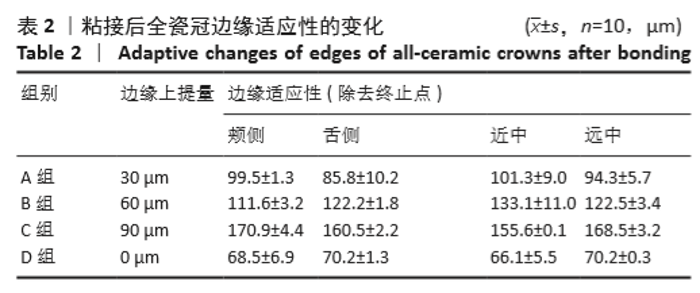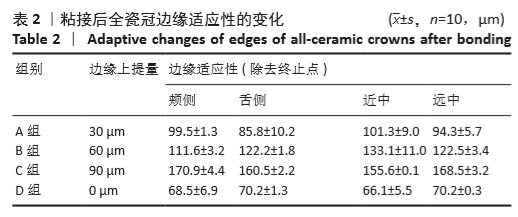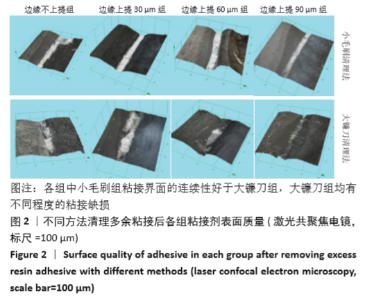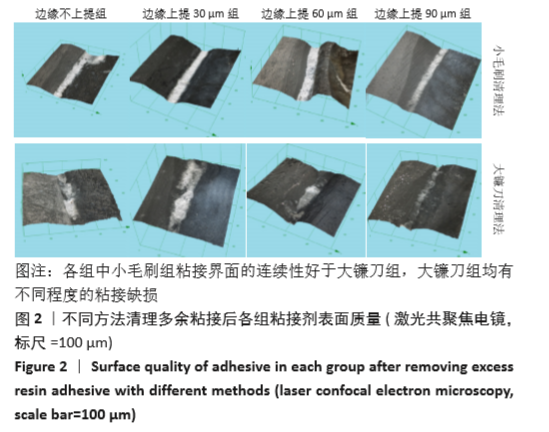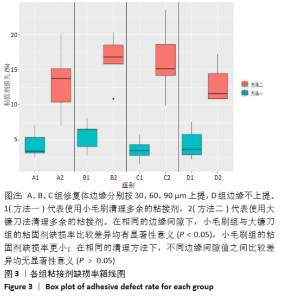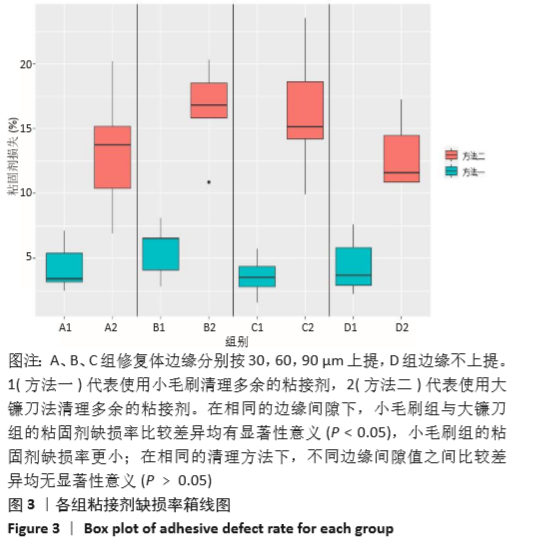[1] MORMANN WH, BIND IA. All-ceramic-chair-sidecomputer-aideddesign/ computer-aided machining retorations. Dent Clin North Am. 2002; 46(2):405-426, viii.
[2] TOKSAVUL S, ULUSOY, TOMAN M. Clincal application of all-ceramic fixed partial dentures and crowns. Quintessence Int. 2004;35(3): 185-188.
[3] BJORN AL, BJORN H, GRKOVIC B. Marginal fit of restorations and its relation to periodontal bone level.II. Crowns. Odontol Revy. 1970;21(3): 337-346.
[4] MCLEAN JW, VON FRAUNHOFER JA. The estimation of cement film thickness by an in vivo technique. Br Dent J. 1971;1131:107-111.
[5] BEHR M, ROSEN TRITT M, REGNET T, et al. Marginal adaptation in dentin of a self- adhesive universal resin cement compared with well-tried systems. Dent Mater. 2004;20(2):191-197.
[6] 吴伟力,张修银, Wu Weili, et al.全瓷冠边缘适合性研究进展[J].口腔材料器械杂志,2007,16(4):200-204.
[7] 翁蓓军,李国强.全瓷冠及其相关陶瓷粘接剂的研究与应用[J].中国组织程研究与临床康复,2011,15(29):5449-5452.
[8] 蒋兵.两种树脂粘结剂对IPS-Empress全瓷冠粘结效果的临床评价[J].中国医药指南,2008,6(17):245-247.
[9] 茅彩云,顾新华,Matthias Kern.不同粘固剂对全瓷冠边缘完整性影响的研究[J].现代口腔医学杂志,2010,24(5):343-346.
[10] GU XH, KERN M. Marginal discrepancies and leakage of all ceramic crowns: Influence of luting agents and aging conditions. Int J Prosthodont. 2003;16(2):109-116.
[11] GONZALO E, SUAREZ MJ, SERRANO B, et al. A comparison of the marginal vertical discrepancies of zirconium and metal ceramic posterior fixed dental prostheses before and after cementation. J Prosthet Dent. 2009;102(6):378-384.
[12] BALKAYA MC, CINAR A, PAMUK S. Influence of firing cycles on the margin distortion of 3 all-ceramic crown systems. J Prosthet Dent. 2005; 93(4):346-355.
[13] KORKUT L, COTERT HS, KURTULMUS H. Internal Fit and Micro leakage of Zirconia Infrastructures; An In-vitro Study. Oper Dent. 2011;36(1): 72-79.
[14] GAVELIS GR, MORENEY JD, RILEY ED, et al. The effect of various finish line preparations on the marginal seal and occlusal seat of full crown preparations. J Prosthet Dent. 2004;92(1): 1-7.
[15] 赵云凤,王华蓉,李勇.牙制备体形态对计算机辅助设计与辅助制作全瓷底层冠适合性的影响[J].中华口腔医学杂志,2003,38(5): 330-332.
[16] MOU SH, CHAI T, WANG JS, et al. Influence of different convergence angles and tooth preparation heights on the internal adaptation of Cerec-crowns. J Prosthet Dent. 2002;87(3):248-255.
[17] SJÖGREN G, BERGMAN M. Relationship between compressive strength and cervical shaping of the all eramic cerestore crown. Swed Dent J. 1987;11:147.
[18] 翁维民,李莹,张富强.牙体制备形态对Cerec 全瓷冠边缘适合性的影响分析[J].上海口腔医学,2008,6(3):293-296.
[19] LAUFER BZ, PILO R, CARDASH HS. Surface roughness of tooth shoulder preparations created by rotary instrumentation, hand planing, and ultrasonic oscillation. Prothnt Dent. 1996;75(1):4-8.
[20] UKON S, ISHILCAWA M, TOHYMOA M, et al.Determination of the fabricating conditions for the preferable marginal and internal adaptation of the mica crystal castable ceramic crown. Dent Mater J. 2004;23(1):53-62.
[21] NAKAMURA T, DEI N, KOJIMA T, et al. Marginal and internal fit of Cerec 3 CAD/CAM all-ceramic crowns. Int J Prosthodont. 2003;16(3):244-248.
[22] 王天,李桂红.三种粘接剂对IPS e.max CAD全瓷冠微渗漏和适合性的影响[J].北京口腔医学,2018,26(3):153-156.
[23] 黄玉喜,王莉莉,张振庭,等.不同粘接剂对氧化锆全瓷冠粘接强度及边缘微渗漏的影响[J].中华老年口腔医学志,2017,15(5): 293-296,301.
[24] 黄宏,张鹏,黎日照.3种树脂水门汀对可切削玻璃陶瓷粘接后断裂强度的影响[J].口腔疾病防治,2016,24(6):341-344.
[25] 李晓飞,刘宗响,秦雁,等.种植牙冠边缘龈下深度和排溢孔对粘结剂残留的影响[J].全科口腔医学电子杂志,2016,3(9):85-86.
[26] 李哲,秦博文,常晓峰,等.种植牙冠牙合面开孔直径对粘接剂流动的计算流体力学分析[J].口腔医学研究,2018,34(12):1342-1346.
[27] 于世琦,高旭,文勇,等.种植全冠粘固时不同处理方法对龈下多余粘固剂量影响的对比研究[J].口腔医学研究,2019,35(10):940-943.
|
